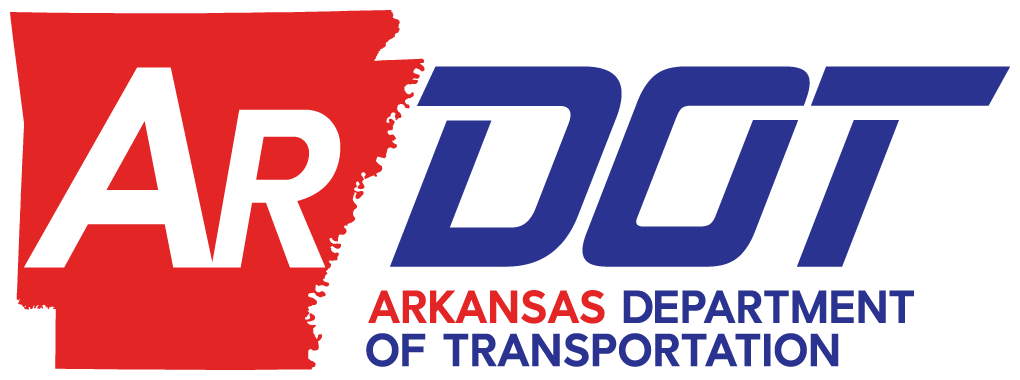One of the key components of traffic safety is engineering. ARDOT’s safety engineers actively search for the most effective countermeasures and best practices to improve roadway safety throughout the state. This supports the Department’s mission to provide safe and efficient transportation solutions to support Arkansas’ economy and enhance the quality of life for generations to come.
Below are specific safety designs and devices used in Arkansas to support these goals.

Rumble Strips
Rumble strips are grooved patterns that are cut into the road surface that produce a rumbling sound and cause the vehicle to vibrate when it’s tires pass over them. The noise and vibration produced by rumble strips alert drivers when they are leaving their lane. For more information on the different types of rumble strips used in Arkansas, check out the Rumble Strip fact sheet linked below.
Raised Pavement Markers
A raised pavement marker (RPM) is a small reflective device attached to the road and used as a positioning guide for drivers. Examples of lane markings that use RPMs include: broken lane lines, double yellow lane lines, exclusive turn lane lines, and directional arrows. ARDOT has been using RPMs to help drivers navigate during low-light visibility on select highways for decades. Click the link below for a more in-depth look at RPMs.


Roundabouts
A roundabout is a circular intersection in which traffic travels around a central island. This simple design is becoming increasingly popular for its safety, mobility, and maintenance advantages. Click the link below for a more in-depth look at Roundabouts.
Raised Medians
A raised median is a physical barrier that separates opposing directions of traffic. By reducing conflict points, raised medians allow traffic to flow more safely and efficiently. Raised medians tend to greatly reduce fatal and serious injury crashes, particularly those resulting from head-on or angle collisions. In urban areas, raised medians are often relatively narrow to limit property impacts.

Pavement Friction Management
Maintaining the appropriate amount of pavement friction is critical for safe driving. ARDOT uses surface treatments to enhance safety at locations known to have a history of high crash rates related to a friction deficiency. ARDOT typically installs surface treatments at locations with a history of fatal and suspected-serious-injury crashes, wet-pavement-related crashes, lane-departure crashes in curves and ramps, and rear-end crashes at intersections. The two most commonly used surface treatments are listed below.

High Friction Surface Treatment (HFST) is a pavement surfacing treatment that provides exceptional skid-resistant properties not typically provided by conventional materials. HFST is applied in spot treatments to provide a durable, long-lasting pavement surface that helps to improve pavement friction in both wet and dry conditions.
Ultra-Thin Bonded Wearing Course (UTBWC) is a pavement surfacing treatment that adds a thin layer of asphalt over existing pavement to provide superior safety benefits under wet pavement conditions. It also extends the life of the pavement.

Median Barriers
Median barriers are longitudinal barriers that separate opposing traffic on divided highways and are designed to redirect vehicles striking either side of the barrier. Median barriers significantly reduce the number of cross-median crashes attributed to the relatively high speeds on divided highways.

Cable median barriers are flexible barriers made from steel cables mounted on steel posts. When impacted, the cables deflect several feet as they absorb energy from the crash. Their larger deflections allow for softer impacts, resulting in fewer injuries, making them one of the most effective safety measures to protect motorists on highways.
Guardrails are considered semi-rigid barriers, where the thin steel beams are mounted to steel or timber posts. When impacted, they are designed to deform and deflect. They deflect less than cable barriers, so they can be located closer to objects where space is limited. Guardrail is the most effective countermeasure for protecting drivers from drop-offs or colliding with fixed objects on the median or roadside.

Safety Campaigns
Another key component to increasing safety on the roadways is education. ARDOT has developed safety campaigns to raise awareness about different topics including safe driving, sharing the road with non-motorists, and work zones. Click the following campaign images to learn more about current educational campaigns running at ARDOT.
Additional Resource
For more information on traffic safety, visit the link below to the Federal Highway Administration (FHWA) website on safety.



